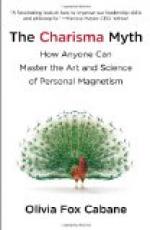Clark has recently suggested in the American Naturalist another theory worthy of consideration. A musical sound is never simple but complex; it consists of one fundamental sound, and of other harmonic sounds at close intervals; the first and most perceptible intervals are the 8th, 5th, 4th, and 3rd major. Each of the simple sounds which, taken together, constitute the whole sound, causes the vibration of a special group of fibres in the auditory nerve. This fact, often repeated, generates a kind of organic predisposition which is confirmed by heredity. If from any cause one of these groups is set in motion, the other groups will have a tendency to vibrate. Therefore, if a singing animal, weary of always repeating the same note, wishes to vary its height, he will naturally choose one of the harmonic sounds of the first. The ultimate origin of the law of melody in organized beings is therefore only the simultaneous harmony, realized in sounds, of inorganic nature. This theory is confirmed by the analysis which has been often made of the song of some birds: the intervals employed by these are generally the same as those on which human melody is founded, the 8th, 5th, 4th, and 3rd major. Reinach, however, observes that Beethoven, who in his Pastoral Symphony has reproduced the song of the nightingale, the cuckoo, and the quail, makes their melodies to differ from those assigned to them by Clark.
The method and direction of the theories proposed by these authors are excellent; but I do not believe that they have discovered the real origin of the sense of music and dancing. I think that the suggestion given in the text, although it requires development, is nearer the truth. Consciousness of the great law by which things exist in a classified form seems to me to be the cause of the sense of graduated pleasure, which constitutes the essence of all the arts.
[37] See Beauquier’s “Philosophie de la Musique.”
[38] Serv. on the AEneid. What the oracles sang was termed carmentis: the seers used to be called carmentes, and the books in which their sayings were inscribed were termed carmentorios.
[39] See Girard de Rialle: Mythologie Comparee. Vol. I. Paris, 1878. A valuable and learned work.
[40] The intense character of the worship of groves in Italy appears from Quintilianus, who says, in speaking of Ennius: “Ennium sicut sacros vetustate lucos adoremus.”
INDEX.
A priori ideas, their definition, 7, 8;
the source of myth, 9
Abstraction, unconscious and explicit,
138;
its degrees, 139-150.
AEschylus, 110
Alger on the doctrine of a future life,
74
Animals and man, their intimate connection,
19;
their embryogenic evolution,
19;
their complete identity, 22;
their self-consciousness,
50;
the projection of themselves




